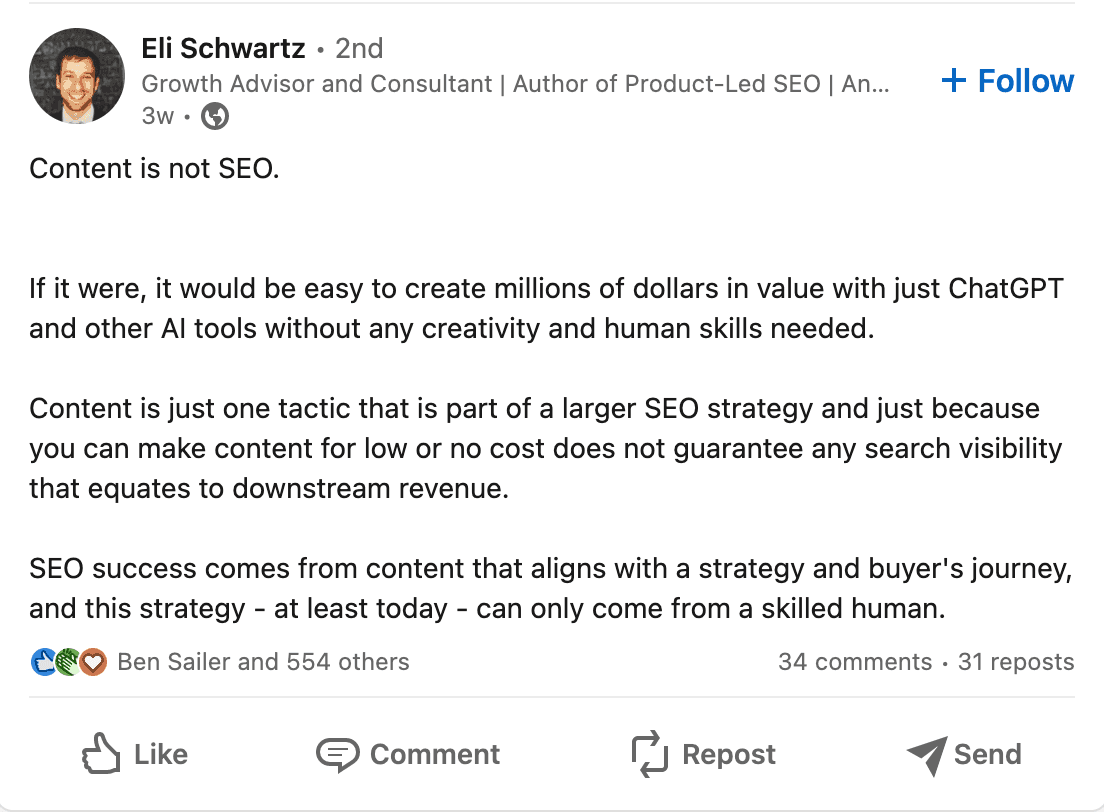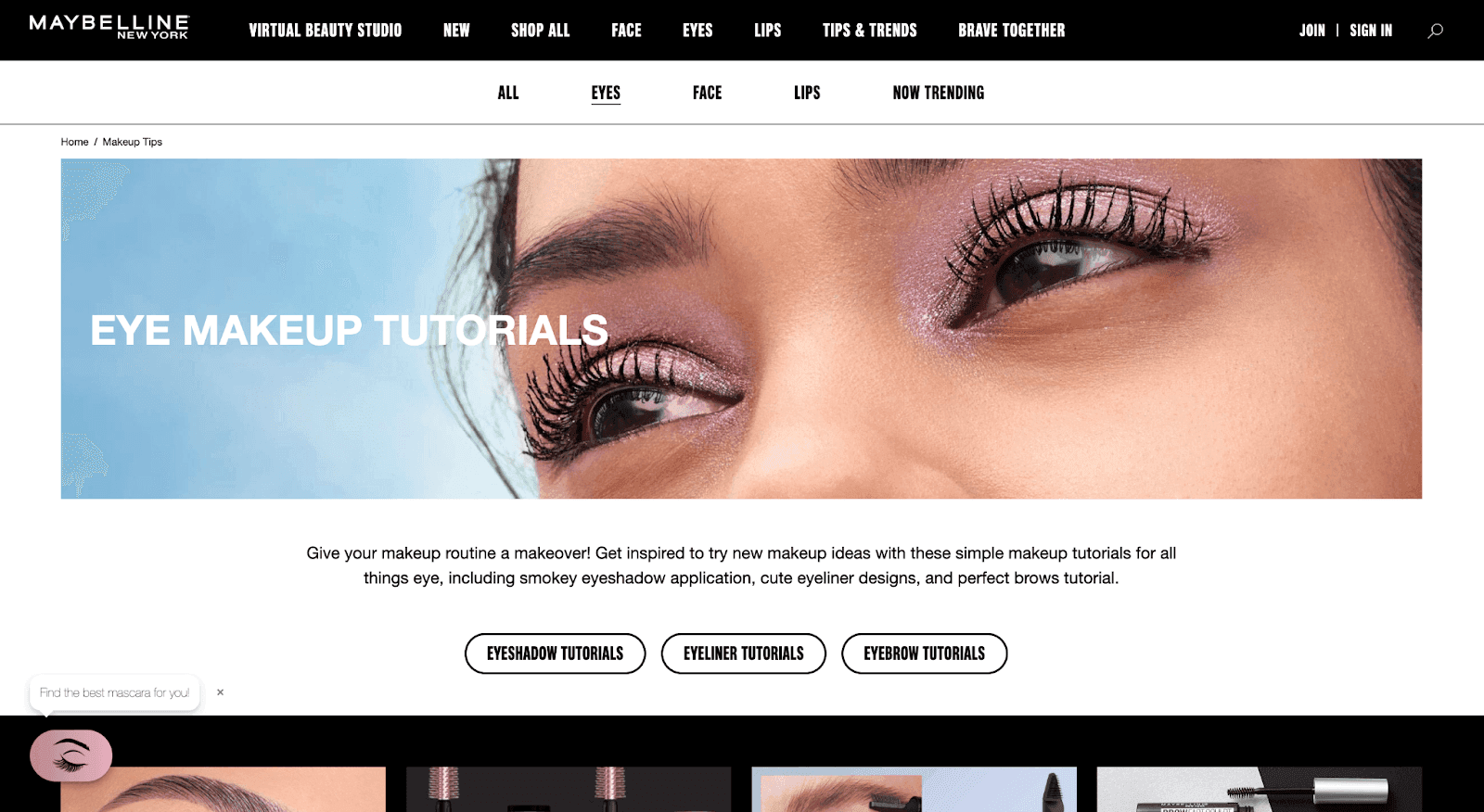New to Content Marketing? Want to find out what it’s all about?
Don’t question any longer. We’re here to show you the basics of content marketing.
Common principles of content marketing include knowing your audience, solving a need, consistently providing valuable content, and converting visitors into customers.
By sticking to these content marketing principles, you turn casual visitors into loyal customers who keep coming back for more.
So, embrace these content marketing basics and watch your brand become the go-to source in your industry.
This guide covers everything you need to know about content marketing principles and how to optimize it for your business.
1. Understand Your Audience
The first thing you need to know about content marketing basics is who your audience is and what your product or service can provide them.
Before you can start providing valuable content to your audience, you need to know who your audience is. The more you understand your audience, the more powerful your content becomes.
You probably have a good idea of who your target audience is already.
If not, create an Ideal Customer Profile that defines who would derive the most value from the content and the product or service you offer. Creating an ICP will help you understand which segments will most likely view your content and buy what you’re selling.
Recommended Reading: How To Master Content Marketing Basics & Boost Your ROI

This way, you can curate your content to align with what they need and how your company can help them. Without defining your audience, you could end up creating content that nobody cares about.
Knowing your audience will help determine your brand voice.
2. Know Your Business
What is your brand voice? What do people think of when they interact with your brand?
The content you put out is a direct reflection of your brand. That is why companies spend so much time and effort ensuring their content strategy aligns with their brand identity.
Implementing brand guidelines from the start will help your team keep a consistent voice. A consistent voice will build trust with your audience.
Here’s an example of what your brand voice could look like:
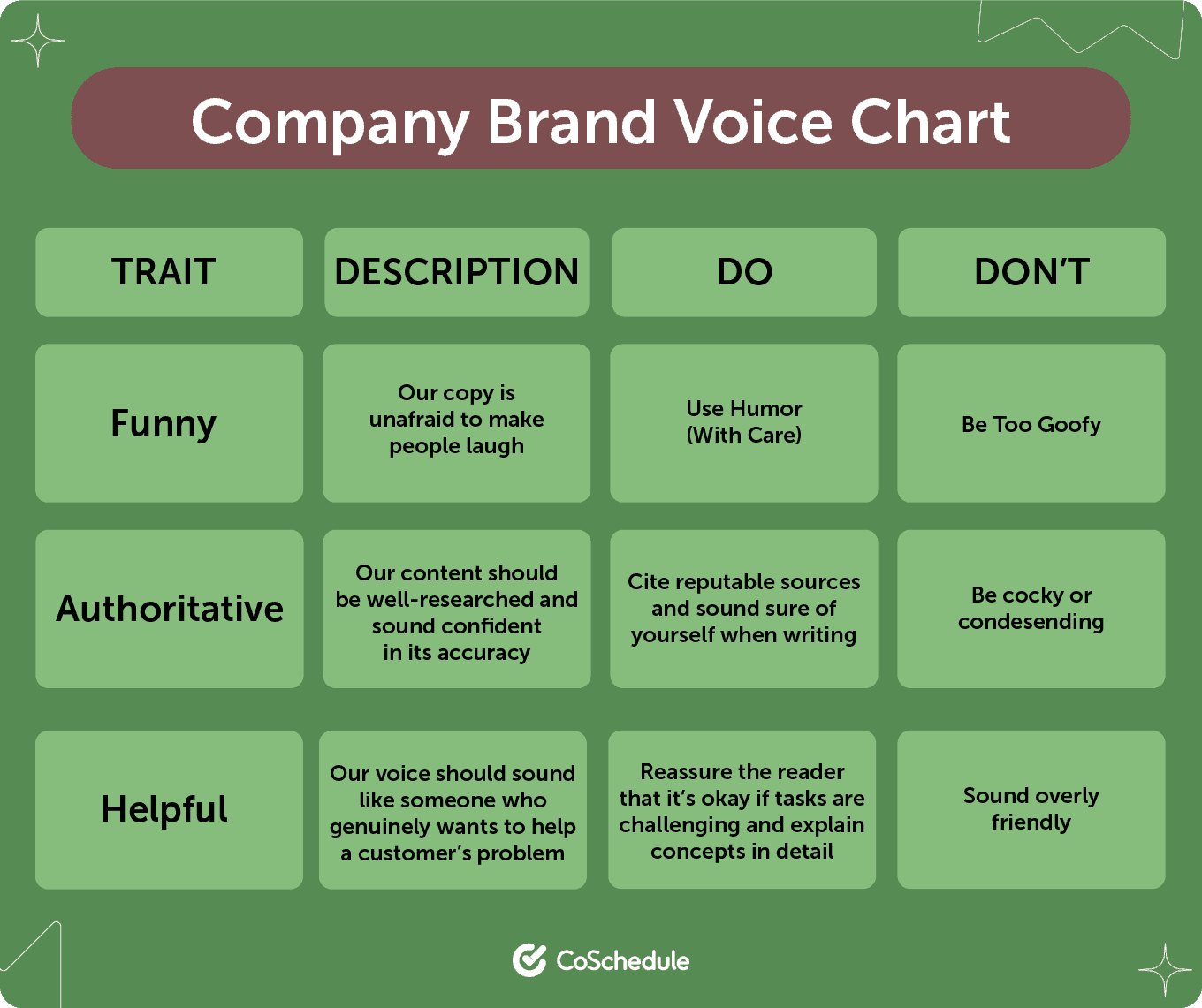
To learn more and get access to this template, visit: Establishing Your Own Brand’s Voice in 7 Steps.
The next thing to think about is your business goals.
What would you like to accomplish from your content marketing? Connect with your team to determine some outcomes you’d like to achieve through your content marketing.
Some basic goals may include:
- Increase brand awareness
- Become a thought leader in your industry
- Improve SERP performance
- Increase conversions
- Engage a specific target audience
- Retain existing customers by providing valuable content
- Generate and nurture leads
- Or all of the above!
3. Provide Value
People will only interact with your content if you provide something valuable to them. Without a value proposition, your content library will have tumbleweeds blowing through it.
Let’s see how we can provide value to attract and engage your audience.
Attract
One of the most important principles of content marketing is finding out what your target audience wants to engage with. The more you know about their interests, the more you can provide them with the content they want.
So, what would your audience be interested in and find valuable? Would they engage with…
- Tutorials and how-tos?
- Guides and lessons?
- Product updates?
- Free resources?
- Or all of the above?
Of course, it can be challenging to identify what people want to read or watch because, at times, they don’t even know.
But here are some strategies that will help you find what kind of content your audience cares about.
Use social media information:
Grab information from your own social media accounts or look at competitor content. Look at your best-performing content on social media and determine why your audience enjoyed it. Also, look at your worst-performing content and determine why it performed poorly.
Which social posts are they engaging with the most? What was the tone of the post? What media was used?
Conduct a content gap analysis:
What is the current media landscape missing? How can you fill that gap? Differentiate yourself from your competitors by providing truly unique content that nobody else offers.

Ask your audience directly
Ask your followers what they want from your content through social media polls, direct messages, email surveys, etc.
See what your competitors are doing
Check out what content has been working for other brands. This will just give you an idea; not what you should do exactly.
Experiment with different content
Try different types of content and measure how they resonate with your audience.
Engage
When creating your content, always remember that this is being made for your audience, not for you. Ask yourself these questions:
Questions to Consider
- Am I solving a problem or just creating more noise?
- Why would people care about this?
- How does this help them?
- Does it solve a problem?
- What’s in it for them to read this piece?
- What should they feel?
Considering these questions will help you create exceptional content that drives traffic and converts customers.
4. Solve A Need
Once you have provided value and solved a problem for your audience, they may realize that they need something more. This is when you convert them from an observer to a customer.
Your content will offer a solution to their problems, and then once they’re ready, you show them how your product/service can solve them even better.
Your audience notices what you do throughout their time engaging with your content. This will hopefully lead them to come back to you for further assistance (buying your product or service).
Let’s look at an example.
CoSchedule provides an extensive library of helpful blog posts, hub pieces, videos, and much more. People keep returning because we provide them with unique content they can’t get anywhere else. This includes free templates and other resources they would find helpful.
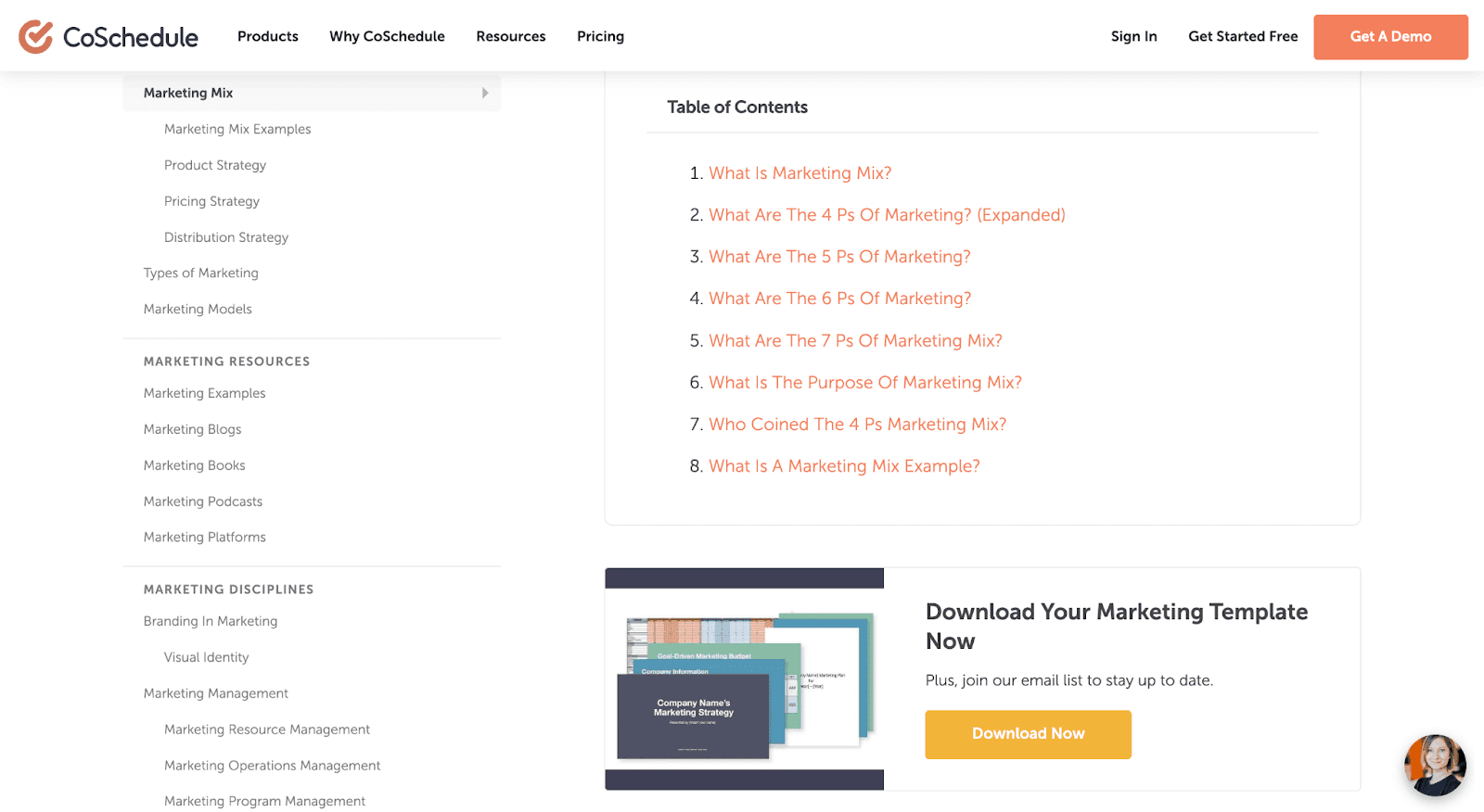
Sometimes, these templates are not enough to stay organized due to limited capabilities. What better place to go than the company that provided them with helpful content and resources? This leads them to consider purchasing something from us. Why?
- Trust has been built.
- They are familiar with us.
- They see that we are experts.
- We helped them in the past by providing helpful free resources.
And you can do exactly this with your content strategy.
5. Deliver Exceptional Quality
Your audience wants quality content that is well-written, organized, and interesting.
But what does high-quality content look like?
Elements of Quality Content
- Correct Grammar and Punctuation
- Fluff-Free
- Consistent Quality
- Organized
- Accurate & Factual
- Eye-Catching
- Simple to Read
- Smooth Flow of Information
- Actionable
- Original
If you want to attract an audience, your quality of content needs to be as strong as possible.
6. Write Original Content
There are trillions of content pieces floating throughout the web, but most of it is just noise.
So how do you cut through the noise and provide something unique people NEED?
Your content needs to be helpful, engaging, and original.
Original Content
Original content is any kind of material that has not been made before.
Creating original content is crucial to your content strategy. It’s a crucial step if you want to provide your audience with high-quality content.
There is nothing wrong with observing other content to get inspiration on what to write about. When you decide to copy others’ writing, things can get hairy.
There are a lot of people that don’t produce their own content. Whether they take it from another website or they deploy an AI bot to write it for them.
One thing will always stay true: your audience values genuinely unique content.
Why Produce Original Content?
Improve search rankings
It is incredibly easy to cut corners, especially with the advancements in AI. Using tools like ChatGPT for content creation is a great way to conjure up ideas, but relying on it to write all your content will not benefit you. As the author of Product-Led SEO Eli Schwartz says, “content that aligns with a strategy and buyer’s journey… at least today…can only come from a skilled human.”
This also applies to copying other people’s work. Luckily, Google can identify the original page the content came from. That means original content is preferred and will appear higher on search results.
With so much content out there, original content will increase visibility and get your work in front of the right audience.
Establish authority and build credibility
One of the main benefits of content marketing is building trust with your audience. You do this by demonstrating your extensive knowledge of the topic and offering something of value.
By doing this, people will continue to come back to your work. Why? Because your work is original, helpful, and credible.
If you have ever searched for a business topic, you have probably seen or clicked on an article by Investopedia.

Investopedia has one of the most extensive business libraries with resources on finance, economics, business strategy, marketing, investing, industry news, and so much more. If Investopedia comes up on a search, many people click on it because it:
- Simplifies complex topics.
- Provides authentic content that can’t be found anywhere else.
- Keeps their content up-to-date and relevant.
- Gives actionable advice.
- Has easy-to-understand content.
- Provides accurate information.
- Consistently produces helpful content.
Investopedia has become a source that people always rely on.
Differentiate yourself from the competition
Original content sets you apart from the competition and is essential to your positioning strategy. Companies that create unique content display that they know what they’re talking about. A customer would choose a company that provides valuable content over a company that doesn’t any day.
7. Share Stories Based On Experience, Expertise, Authoritativeness, & Trustworthiness
Google constantly updates their Core Web Vitals to offer the best user experience. They use the concept of EEAT to evaluate if their search rankings are providing helpful, relevant information.
- Experience:The extent to which the content creator has first-hand experience in the topic.
- Expertise: The amount of real-world experience or formal training the content creator has on the subject.
- Authoritativeness:The amount of authority the content creator has on the subject. Do other people look to them as the go-to authority on the topic?
- Trustworthiness:The amount of trust people have for the content creator.
Let’s look at some ways you can develop the EEAT of your site.
Experience
- Share personal experiences.
- Get reviews.
- Make sure freelancers have experience in the topic.
- Include their experience in their author bios.
Expertise
- Create truly unique content.
- Create high-value resources.
- Audit and update your content.
- Have author bios with their credentials.
- List your experts on your About page.
Authority
- Build a content marketing framework.
- Consistently publish content.
- Include clear sources and credits.
- Differentiate yourself from competitors.
- Get mentions from trusted sources.
- Appear on podcasts
- Partner with influencers
- Guest-post on authoritative sites
- Look to create user-generated content.
- Build backlinks with off-page SEO.
Trustworthiness
- Ensure that your information is accurate, truthful, and useful.
- Provide the information you promised.
- Don’t use jargon.
- Keep important information in prominent areas.
- Show your contact information on your site.
- Share your sources.
- Don’t have an overwhelming amount of ads.
- Promote your content offsite.
The bottom line: Providing your audience with what they want in an expert, authoritative, and trustworthy way will result in SEO success.
8. Optimize For Discovery
Knowing how to get discovered is crucial in today’s marketing landscape. However, the world of SEO is constantly evolving and requires much understanding.
What worked a few months ago could be long gone, but some fundamentals remain relatively unchanged. SEO used to be all about tricks and tactics, but now it’s about content.
SEO as we know it picked up camp and moved in with content marketing
– Nathan Ellering
So how can we approach SEO from a content marketing perspective?
Keywords
Keywords align content with what your audience is interested in. Google tries to provide searchers with the most relevant sites based on their search. Using relevant keywords appropriately will help Google connect you with your audience. However, stuffing your site with keywords will negatively affect your search rankings.
There are several keyword research tools that will show you the most popular keywords.
Quality Content
We may sound like a broken record here, but let’s say it again:
You can create valuable content that will be found by:
- Solving a problem for your audience
- Maintaining relevant content
- Ensuring your information is accurate and up-to-date
- Keeping content original and unique
User Experience
Improve how user-friendly your site is.
This means:
- Fast site speed
- The user gets what they expected
- The site is easy to navigate
- No broken links
- Enhanced metadata
Provide a user-friendly experience to increase the chances of people staying on your site longer.
Recommended Reading: Must Have AI Content Marketing Tools That Change The Game
9. Optimize For Conversion
At the end of the day, marketing exists to generate profitable customer action. Understanding conversion rate optimization (CRO) will help you drive sales through your content strategy.
To convert your visitors, you will want your content to align with what you do. Let’s look at a company that does this exceptionally well.
Maybelline creates a pleasant and natural user experience that leads visitors to engage with their content for longer and eventually persuades them to purchase something. People interact with Maybelline’s website because they provide content that helps them, such as an extensive library of makeup tutorials.
They offer free resources that anyone can use to improve their makeup skills. This leads to visitors buying something from Maybelline due to a few reasons:
- Maybelline has built trust with its audience.
- People see Maybelline as an expert on the topic of makeup.
- They see how well their products work.
- They want to look like the people in the tutorials.
What Are The Factors Of Conversion?
The LIFT Model allows you to assess what kind of experience your audience has when they visit your site. Doing this helps you understand what your prospects need and how you can solve them. Let’s take a look.

Unique Value Proposition: Why people buy from you. This benefit or solution differentiates your product or service and positions it as the best possible option.
Relevance: Did the visitor get what they came for or leave disappointed?
Clarity: The reader understands the action you want them to take and why. Include a call to action to make it clear.
Urgency: When should they take action and why?
Anxiety: Do they trust you enough to take action? If they don’t trust you, they will ultimately look somewhere else.
Distraction: Make sure nothing on the page could divert their attention from the desired action.
10. Constantly Evolve
The marketing world is constantly evolving, and marketers need their content to evolve with it.
Marketers are constantly faced with changes in new technology, demographic trends, customer needs, social media trends, search ranking guidelines, and so much more.
That is why you must be an agile marketer in today’s world. Those who can adapt efficiently will reap the benefits, while those trapped in traditions will fall behind quickly.
Part of being agile means constantly evolving your content strategy. Picking a strategy and not adjusting it for years is a great way to dig yourself into a hole. Your content marketing strategy needs to be prepared to evolve as times change. Reviewing it regularly will help you do this.
Additionally, your organization should review your content as time goes on to ensure its accuracy. Outdated content will confuse your customers and cause them to lose trust. For example, having a support document with old screenshots of your product will give the visitor the wrong impression. To combat this, it’s crucial to conduct content audits over time.
A content audit dissects a company’s content and its overall performance. It looks at all of their individual metrics, channels, and content to mainly determine two factors: what’s working and what isn’t?
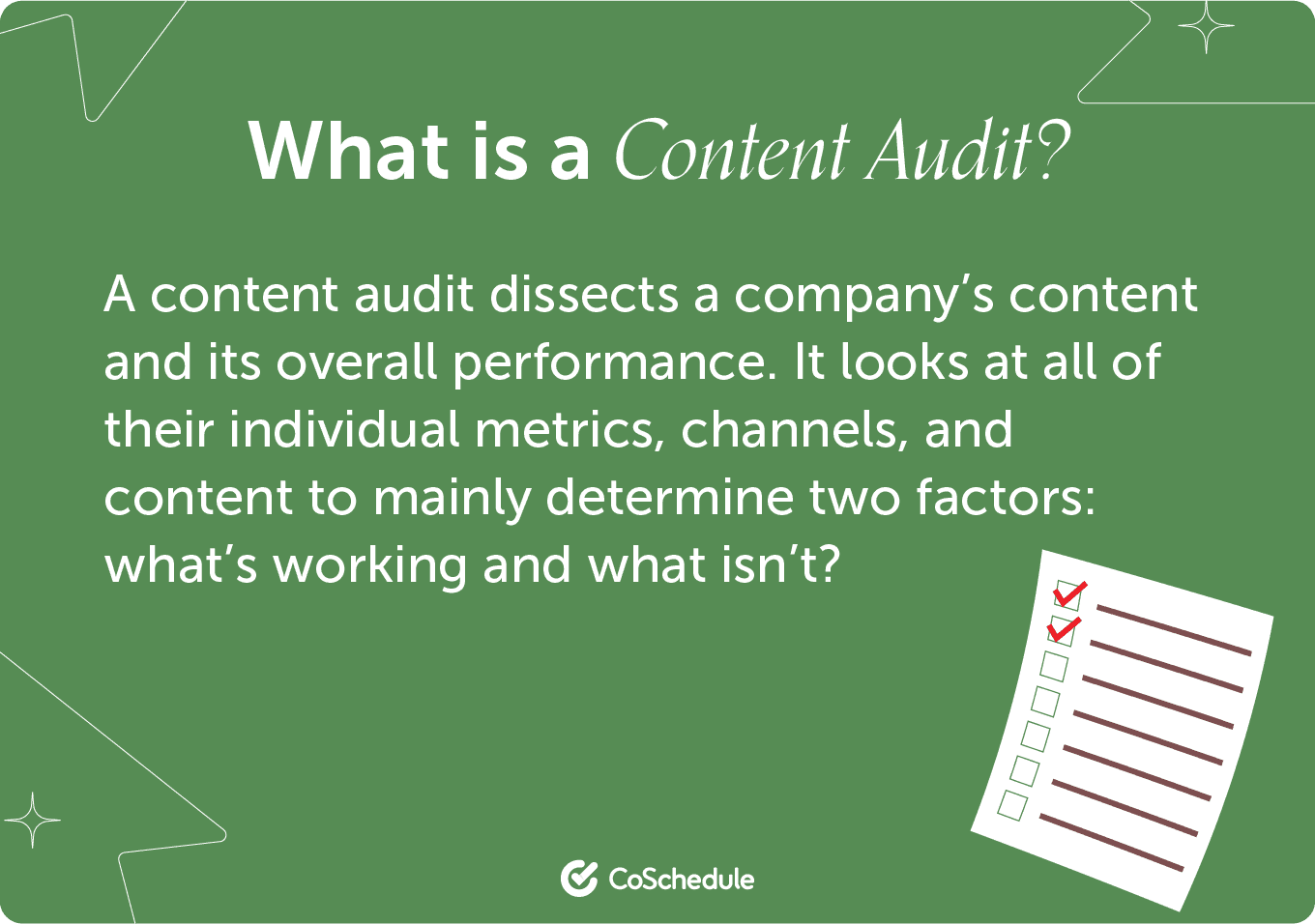
This positions a business to create more content that generates engagement and dials back what’s collecting dust.
Conclusion
Content marketing doesn’t have to be a daunting, time-consuming task.
With these essential content marketing principles, you’re well on your way to mastering the basics.
By sticking to these content marketing basics, you’ll not only turn casual visitors into loyal customers but also establish your brand as the go-to source in your industry.
So, utilize these principles and watch your business flourish with a content strategy that stands out.


